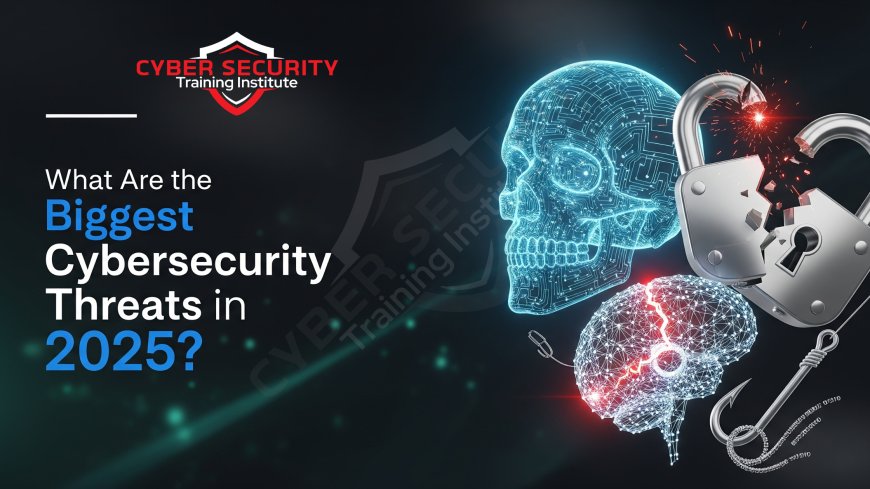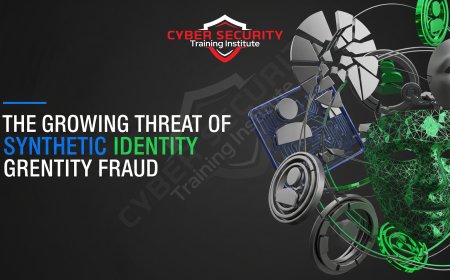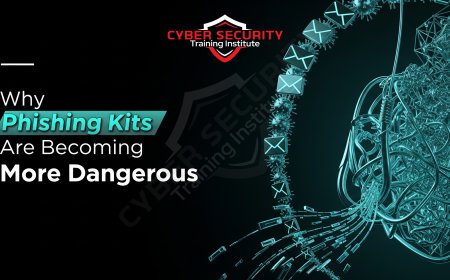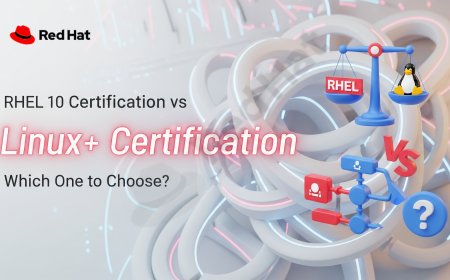What Are the Biggest Cybersecurity Threats in 2025?
Imagine waking up one morning to find your personal photos, work files, and even your smart home devices locked away by invisible thieves demanding a hefty ransom. Or picture a deepfake video of a world leader spreading misinformation that sparks global chaos. These aren't scenes from a sci-fi movie—they're real possibilities in our increasingly connected world. As we step into 2025, cybersecurity threats are evolving faster than ever, fueled by advancements in technology like artificial intelligence and quantum computing. According to experts, cyber attacks are projected to cost the global economy over $10 trillion annually by the end of this year, a staggering increase from previous estimates. From sophisticated ransomware hitting critical infrastructure to AI-driven phishing scams that fool even the savviest users, the landscape is fraught with dangers that affect individuals, businesses, and governments alike. In this blog post, we'll explore the biggest cybersecurity threats looming in 2025. We'll break them down in simple terms, explain why they matter, and offer practical tips to stay safe. Whether you're a beginner just learning about online security or a seasoned pro looking for the latest insights, this guide aims to empower you with knowledge. Drawing from recent reports and expert predictions, we'll cover everything from AI-powered attacks to the risks posed by everyday IoT devices. Let's dive in and arm ourselves against the digital dangers ahead.

Table of Contents
- Why Cybersecurity Threats Matter in 2025
- Top Cybersecurity Threats in 2025
- How These Threats Work
- Strategies to Protect Against 2025 Threats
- Real-World Examples of Recent Cyberattacks
- Future Trends in Cybersecurity Defense
- Conclusion
- Frequently Asked Questions
Why Cybersecurity Threats Matter in 2025
In 2025, our reliance on technology is greater than ever. Smart homes, remote work, online banking, and even healthcare depend on digital systems. But this connectivity comes with risks. Cyberattacks can steal personal data, disrupt essential services, or cause financial chaos. Here’s why these threats are critical:
- Widespread Impact: Cyberattacks can affect individuals, businesses, and entire nations, disrupting economies and public safety.
- Evolving Tactics: Criminals use advanced tools like AI to create smarter, harder-to-detect attacks.
- Data Value: Personal and corporate data are valuable on the dark web, driving more sophisticated breaches.
- Connected Devices: The rise of Internet of Things (IoT) devices, like smart thermostats, creates new entry points for hackers.
- Human Vulnerabilities: People remain the weakest link, often falling for scams due to lack of awareness.
Understanding these threats is the first step to protecting yourself in a digital world.
Top Cybersecurity Threats in 2025
In 2025, cybercriminals are leveraging cutting-edge technology and human psychology to launch attacks. The table below highlights the biggest threats, their methods, and their potential impact.
| Threat | Method | Potential Impact |
|---|---|---|
| AI-Powered Phishing | AI crafts convincing emails or texts mimicking trusted sources. | Steals credentials or installs malware, compromising accounts. |
| Ransomware 2.0 | Encrypts data and threatens to leak it unless ransom is paid. | Disrupts businesses, leaks sensitive data, causes financial loss. |
| IoT Device Attacks | Exploits vulnerabilities in smart devices like cameras or medical equipment. | Gains network access, disrupts services, or endangers safety. |
| Deepfake Social Engineering | Uses AI-generated voice or video to impersonate trusted individuals. | Tricks users into sharing data or transferring funds. |
| Supply Chain Attacks | Targets third-party vendors to breach larger organizations. | Compromises multiple systems, causing widespread damage. |
These threats reflect the growing complexity of cyberattacks, driven by advancements in technology and global connectivity.
How These Threats Work
Each cybersecurity threat in 2025 operates uniquely, exploiting specific vulnerabilities:
- AI-Powered Phishing: AI analyzes public data to create personalized, convincing emails or texts, tricking users into clicking malicious links or sharing credentials.
- Ransomware 2.0: Beyond locking data, modern ransomware threatens to leak sensitive information, pressuring victims to pay quickly.
- IoT Device Attacks: Hackers exploit weak security in connected devices, like smart home gadgets, to access networks or spy on users.
- Deepfake Social Engineering: AI-generated videos or voice calls mimic CEOs or colleagues, convincing victims to transfer money or share data.
- Supply Chain Attacks: Attackers compromise a vendor’s software or systems, using it as a backdoor to infiltrate larger organizations.
Understanding these methods helps you recognize and avoid falling victim to these sophisticated attacks.
Strategies to Protect Against 2025 Threats
Staying safe in 2025 requires proactive measures. Here are practical strategies for individuals and organizations:
- Use Multi-Factor Authentication (MFA): Add extra verification steps, like a phone code, to secure accounts even if passwords are stolen.
- Keep Software Updated: Regularly patch devices, apps, and systems to close vulnerabilities hackers exploit.
- Educate Yourself: Learn to spot phishing signs, like odd email addresses or urgent demands, and verify requests directly.
- Secure IoT Devices: Change default passwords on smart devices and use separate networks for them.
- Adopt Zero Trust Security: Verify every user and device continuously, reducing risks from insider or external threats.
- Back Up Data: Regularly save important files to secure cloud services or external drives to recover from ransomware.
- Use Advanced Antivirus: Deploy tools with AI-driven threat detection to catch malware and phishing attempts.
- Vendor Risk Management: Ensure third-party vendors follow strict cybersecurity standards to prevent supply chain attacks.
These steps create a strong defense against the evolving threats of 2025.
Real-World Examples of Recent Cyberattacks
Recent incidents highlight the severity of modern cyber threats:
- Colonial Pipeline Ransomware (2021): A ransomware attack disrupted U.S. fuel supplies, showing the power of modern ransomware.
- SolarWinds Supply Chain Attack (2020): Hackers compromised software updates, breaching government agencies and companies.
- Microsoft Exchange Server Hack (2021): Exploited vulnerabilities affected thousands of organizations, stealing data and installing malware.
- Deepfake CEO Scam (2019): A UK company lost $243,000 after a deepfake voice call mimicked their CEO, demanding a transfer.
These examples underscore the need for vigilance and robust cybersecurity in 2025.
Future Trends in Cybersecurity Defense
As threats evolve, so do defenses. Emerging trends for 2025 include:
- AI-Driven Security: AI will detect and respond to threats faster, analyzing patterns to stop attacks in real-time.
- Passwordless Authentication: Biometrics and passkeys will replace vulnerable passwords, reducing phishing risks.
- Quantum-Resistant Cryptography: New encryption methods will protect against future quantum computing attacks.
- Global Collaboration: Governments and companies will share intelligence to combat cross-border cyber threats.
These advancements will make it harder for cybercriminals to succeed, strengthening our digital defenses.
Conclusion
In 2025, cybersecurity threats like AI-powered phishing, ransomware 2.0, IoT attacks, deepfake scams, and supply chain breaches pose significant risks to individuals, businesses, and governments. These threats exploit advanced technology and human vulnerabilities, making awareness and proactive defense critical. By adopting strategies like MFA, software updates, Zero Trust security, and education, you can protect yourself against these dangers. Real-world attacks like SolarWinds and Colonial Pipeline show the stakes, while future defenses like AI and passwordless authentication offer hope. Staying informed and vigilant is key to navigating the cybersecurity landscape of 2025 safely.
Frequently Asked Questions
What are the biggest cybersecurity threats in 2025?
Key threats include AI-powered phishing, ransomware 2.0, IoT device attacks, deepfake social engineering, and supply chain attacks.
What is AI-powered phishing?
AI-powered phishing uses artificial intelligence to create convincing emails or texts, tricking users into sharing data or clicking malicious links.
What is ransomware 2.0?
Ransomware 2.0 encrypts data and threatens to leak it, pressuring victims to pay to prevent exposure.
Why are IoT devices vulnerable?
IoT devices, like smart cameras, often have weak security, making them easy entry points for hackers.
What is a deepfake scam?
Deepfake scams use AI-generated voice or video to impersonate trusted individuals, tricking victims into sharing data or money.
What is a supply chain attack?
A supply chain attack targets a vendor’s systems to breach larger organizations, compromising multiple networks.
How can I protect against phishing?
Verify senders, avoid clicking suspicious links, use MFA, and stay cautious of urgent demands.
What is multi-factor authentication (MFA)?
MFA requires multiple verification methods, like a password and a phone code, to secure accounts.
Why are software updates important?
Updates patch vulnerabilities that hackers exploit, keeping your devices secure.
What is Zero Trust security?
Zero Trust verifies every user and device continuously, assuming no one is inherently trustworthy.
How do I secure IoT devices?
Change default passwords, use separate networks, and keep device firmware updated.
What is a passkey?
A passkey is a cryptographic key tied to a device, offering a secure, passwordless login method.
Can antivirus software stop 2025 threats?
Advanced antivirus with AI-driven detection can catch many threats, but it’s not foolproof.
What was the SolarWinds attack?
The SolarWinds attack (2020) was a supply chain breach that compromised software updates, affecting governments and companies.
How does AI improve cybersecurity?
AI detects threats in real-time by analyzing patterns, stopping attacks faster than traditional methods.
What is quantum-resistant cryptography?
It’s encryption designed to withstand attacks from quantum computers, protecting future data.
Can individuals protect against supply chain attacks?
Individuals can’t directly prevent them but can use strong security practices and trusted vendors.
How do I spot a deepfake scam?
Look for unusual behavior, verify requests directly, and be skeptical of urgent demands.
What should I do if I’m hacked?
Change passwords, run antivirus scans, enable MFA, monitor accounts, and report to authorities.
How will cybersecurity evolve in 2025?
Trends include AI-driven defenses, passwordless authentication, quantum-resistant encryption, and global collaboration.
What's Your Reaction?
 Like
0
Like
0
 Dislike
0
Dislike
0
 Love
0
Love
0
 Funny
0
Funny
0
 Angry
0
Angry
0
 Sad
0
Sad
0
 Wow
0
Wow
0
















